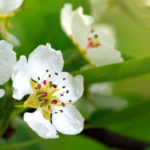From the Compact Fruit Tree Blog
2024 IFTA Annual Conference Presentations
IFTA 2024 Annual Conference – February 12-14 2024 Bridging the Gap Between Information and Action Thank you for your interest…
IFTA Members Share: “Yellow and Black”, By Gary Mount
Thank you for your interest in our articles. Full access to this story requires membership. See all our membership options…
2021 IFTA Virtual Conference
Thank you for your interest in our articles. Full access to this story requires membership. See all our membership options…
2022 IFTA PA Annual Conference Videos – February 13-15 – Hershey, PA
Thank you for your interest in our articles. Full access to this story requires membership. See all our membership options…
Research Report: New Training Systems, Spacings and Rootstocks for Eastern Sweet and Tart Cherry Growers
Thank you for your interest in our articles. Full access to this story requires membership. See all our membership options…
Membership Plans
To join IFTA, first register as a new user. If you are already a member, please login.
Single Annual Membership
$175/year
Join IFTA today and get access to all our great content, education and the ability to register for our exclusive events.
Corporate Account, Plus additional Members
$175 +$75 per member/Year
With the corporate membership you can add additional employees to get access to our great content and events.



